STEM coaches Alyson Callahan and Leilani Howard worked with students at all four of our elementary schools on the cloud in a bottle experiment, ultimately giving them a better understanding of air pressure, temperature, clouds and their effects on each other.
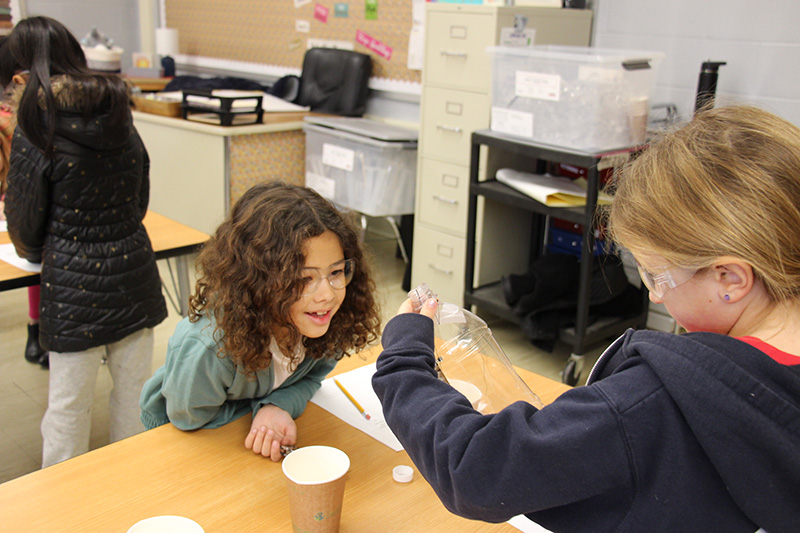
The students worked in pairs, all with their safety goggles intact. They each had a two-liter plastic bottle with a temperature strip hanging in it. They started with checking the temperature. They compressed the bottle slowly, repeatedly and noticed that the increased air pressure inside caused the temperature to also rise. When they released the pressure, the temperature went down.
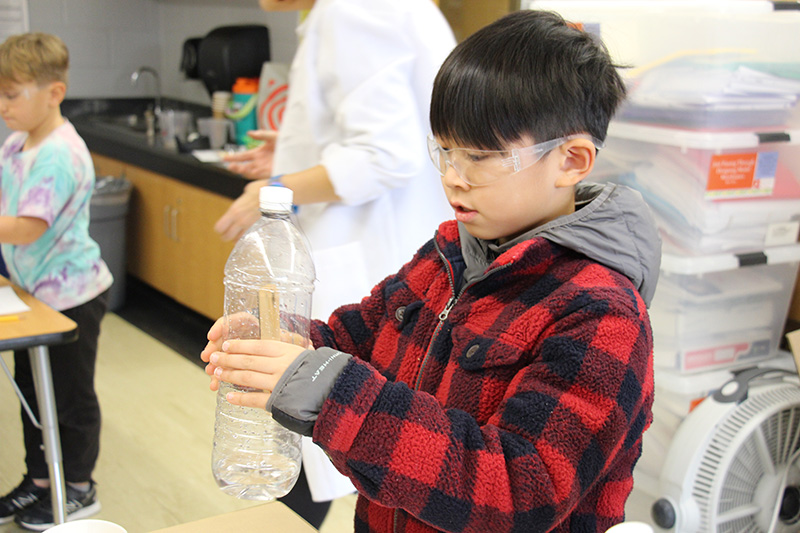
There was no cloud in the bottle because water is needed to form a cloud. You cannot create a cloud without water, the students learned. Water evaporates to water vapor and needs some type of material to cling to in order to form a cloud. There are lots of dust and smoke particles in our air and that is what the water vapor clings to in order to form a cloud! And now they were going to create that.
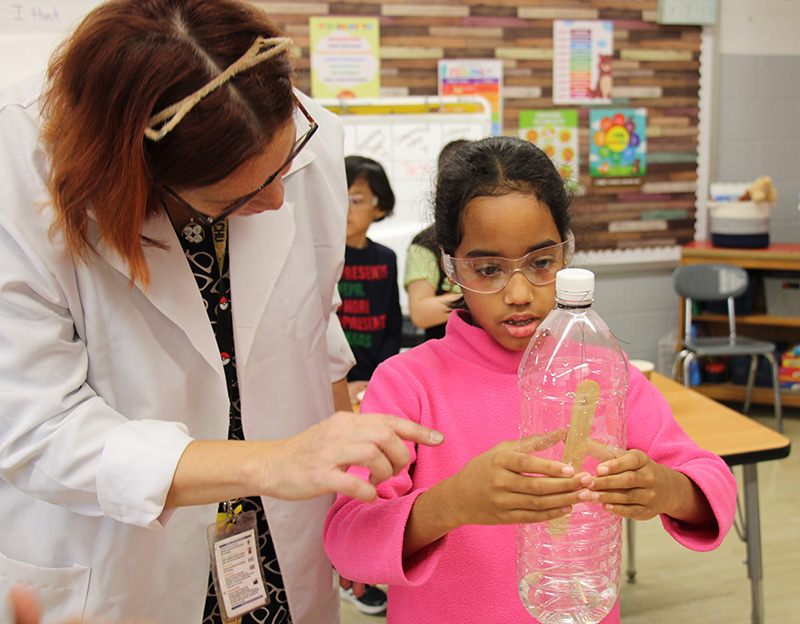
The students poured room-temperature water to their bottles. The STEM coaches went around to each team, lit a match and put it into the bottle. The students quickly put the lid on their bottle. They recorded their new air temperature. Even though there were smoke particles now in the bottle, you couldn’t see them. But when the students created air pressure by squeezing the bottle, they could see the bottle got a little foggy. So the addition of air pressure and water vapor clinging to the smoke particles created the cloud!
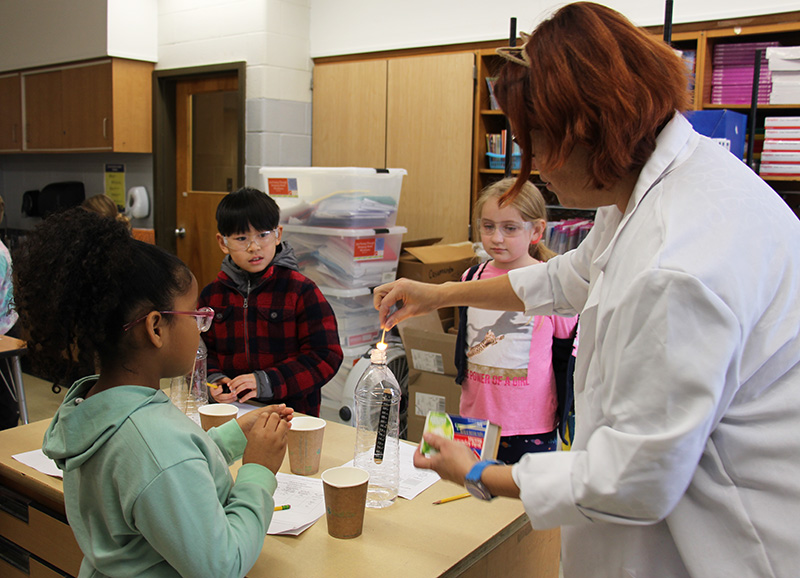
They made their hypothesis based on the temperature of the water – hot water created more fog than cold water – and the amount of air pressure.
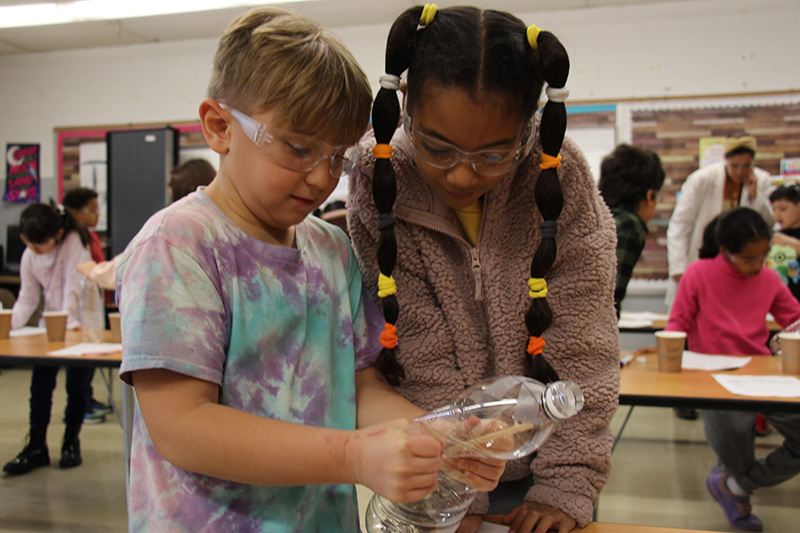
The students came away with a much better understanding of weather, the water cycle processes and weather variables and how they all affect cloud formation. Great job by all!
